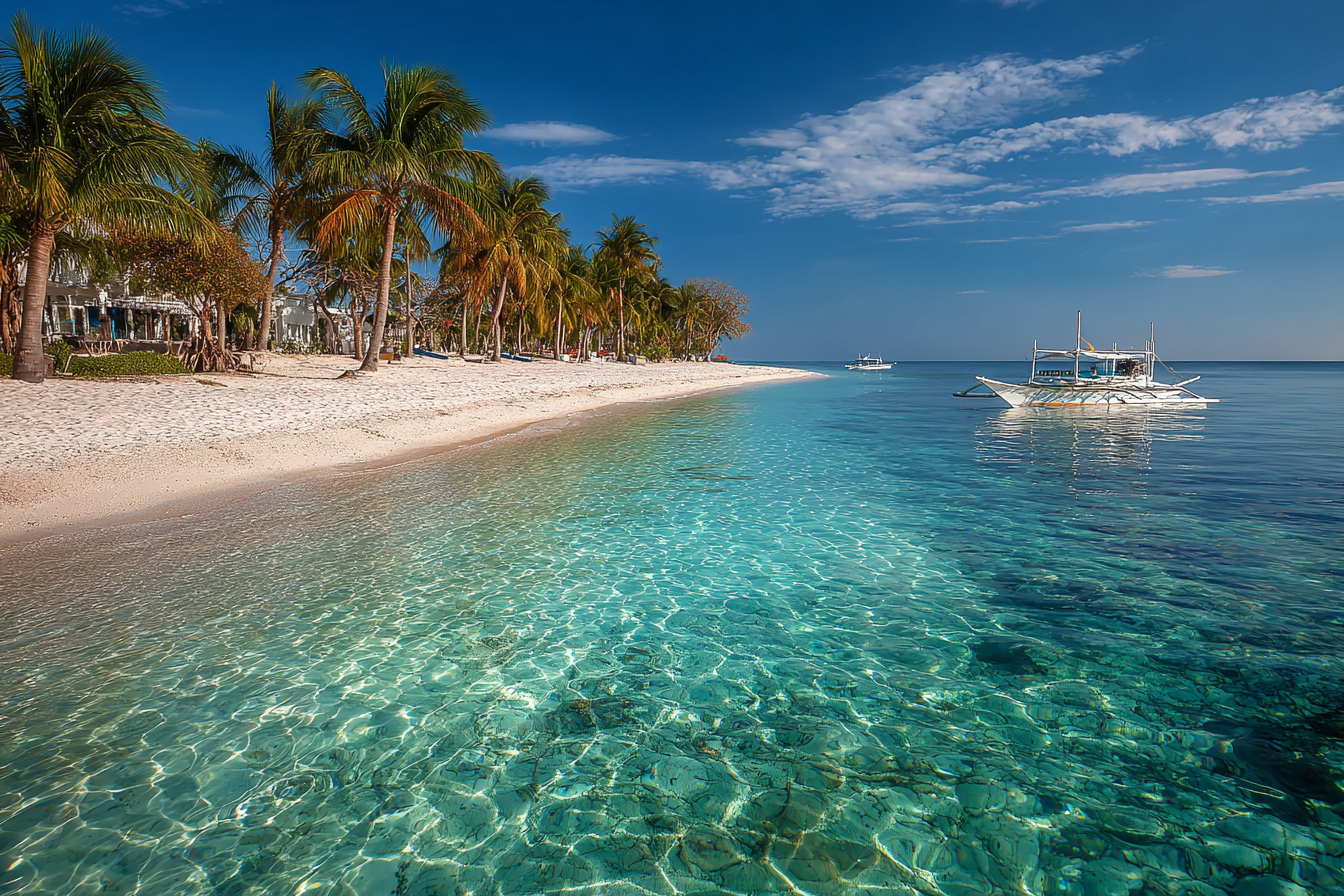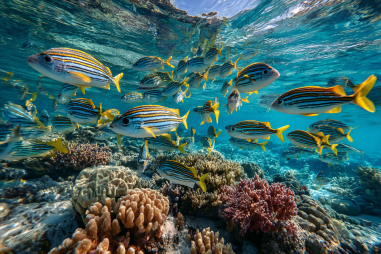Planning your first trip to the Philippines is an exciting adventure filled with stunning beaches, vibrant culture, and warm hospitality. Whether you’re drawn to the bustling cities, pristine islands, or historical sites, this Southeast Asian archipelago offers something truly unforgettable. In this guide, we’ll walk you through everything you need to know to make your visit smooth and enjoyable—from practical tips like visa requirements and transportation to must-see destinations and local customs.
Overview of the Philippines as a Travel Destination
The Philippines is a tropical paradise made up of more than 7,000 islands, offering a rich blend of natural beauty, cultural heritage, and modern attractions. Known for its crystal-clear waters, world-class diving spots, lush mountains, and historical landmarks, the country is a favorite for travelers seeking adventure and relaxation alike. With a warm climate year-round and a population known for their friendliness, the Philippines truly welcomes visitors with open arms.
Major regions include Luzon, Visayas, and Mindanao, each with distinct flavors. Manila, the capital city, is a vibrant metropolis with a mix of old and new, while places like Palawan and Boracay boast some of the most breathtaking beaches in the world. Whether you want to explore cities, trek through rainforests, or lounge on white sandy shores, the Philippines has it all.
When to Visit: Weather and Seasons
Understanding the Philippines’ weather patterns is key to planning your trip. The country has a tropical climate with two main seasons:
- Dry Season (November to April) – Also considered the best time to visit, the dry season offers sunny skies and minimal rainfall. This is peak tourist season, especially around December to February when the weather is cooler and ideal for beach activities and island hopping.
- Wet Season (May to October) – Characterized by frequent afternoon showers and occasional typhoons, this period sees fewer tourists and offers lower prices. While rain can disrupt travel plans, it doesn’t necessarily mean all your days will be wet. Some travelers enjoy the lush greenery and quieter tourist spots during these months.
For first-time visitors, timing your trip during the dry season is recommended to make the most of outdoor activities and beach time.
Visa and Entry Requirements
Most travelers visiting the Philippines will need to check visa requirements beforehand. Fortunately, the Philippines offers visa-free entry to citizens of over 150 countries, including the United States, Canada, the United Kingdom, Australia, and most European nations, for stays of up to 30 days. Visitors must have:
- A valid passport with at least six months of validity beyond the intended stay
- A return or onward ticket
- No criminal record or health issues that could pose public health concerns
If you plan to stay longer than 30 days, visas can be extended locally or obtained in advance from Philippine consulates or embassies. Always check the latest travel advisories and entry rules before departure, as policies can change due to health or security concerns.
Getting Around: Transport Options
Traveling around the Philippines can be an adventure in itself. The transportation options vary widely depending on where you are:
- Domestic Flights: Because of the island geography, flying is often the most time-efficient mode of travel between distant locations. Major airlines like Cebu Pacific and Philippine Airlines offer frequent flights connecting key hubs such as Manila, Cebu, Davao, and Iloilo.
- Ferries and Boats: Many islands are accessible by ferry, including popular routes between Cebu, Bohol, and Palawan. Ferries are affordable and offer scenic views, but schedules can be affected by weather.
- Land Transport: Once on an island, jeepneys are the iconic mode of transport widely used for short distances. They’re colorful, inexpensive, and an authentic local experience. For more comfort and convenience, taxis and ride-hailing apps like Grab are widely available in cities. Tricycles, motorcycles, and buses serve smaller towns and rural areas.
- Car and Scooter Rentals: Renting a car or scooter is popular, especially in tourist hotspots, to explore off-the-beaten-path destinations at your own pace. However, traffic in big cities like Manila can be heavy and driving styles unfamiliar for some.
Must-See Destinations and Activities
The Philippines offers a wealth of destinations to suit every traveler’s taste. Here are some highlights you shouldn’t miss:
- Palawan: Famous for its stunning limestone cliffs, turquoise lagoons, and pristine beaches. Visit El Nido and Coron for island hopping and amazing snorkeling experiences.
- Boracay: Known for its powdery white sand beach and vibrant nightlife, Boracay underwent a major cleanup and now offers a more eco-friendly vacation experience.
- Chocolate Hills and Tarsier Sanctuary (Bohol): Explore these unique geological formations and get close to the tiny tarsiers, one of the world’s smallest primates.
- Manila: Visit historic Intramuros, enjoy museums, bustling markets, and a rich culinary scene.
- Cebu: A mix of city life, waterfalls, diving spots, and cultural heritage. Nearby Oslob is famous for whale shark watching.
- Siargao: Surf capital of the Philippines, also great for island hopping and lagoon visits.
Activities include snorkeling, diving, hiking volcanoes like Mount Mayon, exploring rice terraces in Banaue, cultural tours, and attending local festivals.
Food and Dining in the Philippines
Filipino cuisine is a delightful fusion of indigenous, Spanish, Chinese, and American influences. When traveling in the Philippines, don’t miss trying:
- Adobo: The national dish made with marinated meat simmered in vinegar, soy sauce, garlic, and spices.
- Lechon: Roasted whole pig with crispy skin, often served at celebrations.
- Sinigang: A sour tamarind-based soup with vegetables and meat or seafood.
- Puto and Kakanin: Traditional rice cakes and sweets.
- Street Food: Try barbecue skewers, balut (fertilized duck egg), and fried banana.
Meals are usually shared family-style, and locals are proud of their food culture, so don’t be shy about asking for recommendations or trying new dishes.
Local Customs and Travel Tips
Respecting local customs will enrich your experience and help you connect better with locals. Here are some key points:
- Greetings: A friendly smile and a polite “Salamat” (thank you) go a long way. Using “Po” and “Opo” shows respect, especially when speaking to elders.
- Dress Modestly: In rural areas and places of worship, modest clothing is appreciated.
- Removing Shoes: Often required when entering homes and some establishments.
- Social Etiquette: Avoid public displays of anger or confrontation, as Filipinos value harmony.
- Bargaining: Common in markets but done with a smile and good humor.
Safety and Health Advice
The Philippines is generally safe for tourists, but like traveling anywhere, it’s wise to stay alert and take precautions:
- Keep an eye on your belongings, especially in crowded places.
- Avoid isolated areas at night and use reputable transport services.
- Tap water is not safe to drink; always drink bottled or filtered water.
- Bring mosquito repellent to prevent dengue fever and other insect-borne illnesses.
- Check any vaccination requirements before travel and consider travel insurance.
Sample Itineraries for Different Budgets and Trip Lengths
Budget 7-Day Itinerary
- Day 1-2: Explore Manila’s historic sites and markets.
- Day 3-5: Take a budget flight to Cebu; visit Kawasan Falls and dive/snorkel in Moalboal.
- Day 6-7: Ferry to Bohol; see the Chocolate Hills, Tarsier Sanctuary, and relax on Panglao Island beaches.
Mid-Range 10-Day Itinerary
- Day 1-2: Discover Intramuros and cultural museums in Manila.
- Day 3-6: Fly to Palawan’s El Nido for island hopping, lagoons, and beaches.
- Day 7-10: Visit Coron for WWII wreck dives and hot springs, returning to Manila for departure.
Luxury 14-Day Itinerary
- Day 1-3: Stay in a boutique hotel in Manila and enjoy fine dining and city tours.
- Day 4-8: Fly to Amanpulo or a luxury resort in Palawan for ultimate beach relaxation and spa treatments.
- Day 9-14: Fly to Siargao for surfing and private island tours, concluding with a final night in Cebu or Manila.
Whatever your budget or interests, the Philippines can craft a memorable experience tailored just for you.
With its remarkable diversity, welcoming people, and breathtaking landscapes, the Philippines invites every traveler to discover its treasures. Prepare well, stay open to new experiences, and you’ll return home with incredible stories and a desire to come back again.







